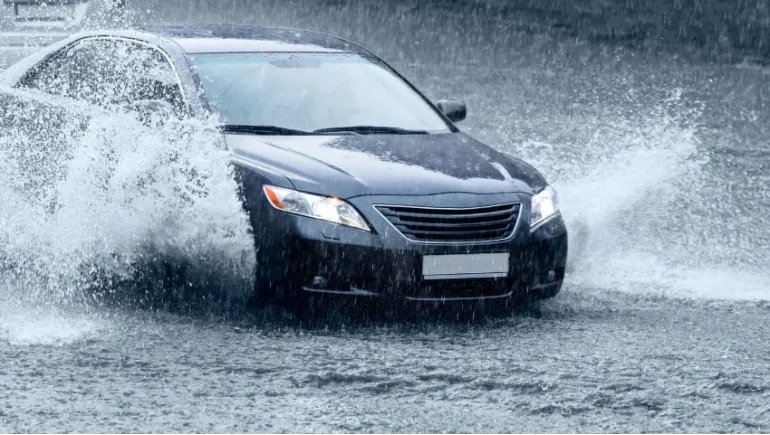
Driving in heavy rain can be challenging and dangerous if not handled properly. Wet roads reduce tire traction, increase braking distance, and limit visibility, all of which significantly raise the risk of accidents. Whether you’re an experienced driver or a beginner, it’s crucial to understand how to adapt your driving habits during rainy weather. This article provides a comprehensive guide with actionable tips to help you drive safely in heavy rain.
Speeding in heavy rain is a recipe for disaster. Rainwater creates a layer between the road and your tires, reducing friction. Driving at slower speeds gives you more control, especially when turning or braking. Stick to the speed limit or drive even slower if visibility is low or the road is flooded.
Always use your headlights when driving in heavy rain, even during the day. This improves your visibility and helps other drivers see you. However, avoid using high beams, as they can reflect off rain or fog and make it harder to see.
Braking in wet conditions takes longer, so increase your following distance from the vehicle ahead. A good rule is to maintain at least a 4 to 5-second gap. This gives you enough time to react if the car in front of you suddenly stops or skids.
Sudden braking, acceleration, or sharp turns can lead to skidding or hydroplaning. Drive smoothly and use gentle pressure on the gas and brake pedals. If you need to slow down, do so gradually.
If you start to hydroplane, stay calm. Ease off the accelerator and steer in the direction you want the front of the car to go. Avoid slamming on the brakes.
Humidity inside the car during rain can fog up your windows, obstructing your view. Use your car’s defogger or air conditioner to clear the windows. Keep a microfiber cloth handy to manually wipe the windshield if needed.
While cruise control is great for dry conditions, it can be dangerous in the rain. You need full control of your vehicle when roads are slippery. If you start to hydroplane while cruise control is on, it can take longer to react, increasing the risk of losing control.
Water tends to collect on the sides of roads, especially on highways. When possible and safe, stay in the middle lanes where the road surface is slightly higher and less prone to water accumulation.
Never attempt to drive through flooded areas. Even a few inches of water can cause your vehicle to stall, or worse, get swept away. Water may also hide potholes, sharp objects, or road damage. If you can’t judge the depth, turn around and find an alternative route.
Approach curves and turns slowly and with extra caution. Wet conditions reduce grip, and taking turns too quickly may result in skidding or spinning out.
Rainy weather demands your full attention. Eliminate distractions like mobile phones or loud music. Keep both hands on the wheel and focus on the road, other drivers, and potential hazards.
If rain becomes too heavy and visibility is dangerously low, don’t hesitate to pull over to a safe location, such as a parking lot or rest area. Turn on your hazard lights to let other drivers know your vehicle is stationary. Waiting for the rain to subside is often the safest choice.
These items can be lifesavers if you face car trouble in the rain.
Check the weather forecast before you travel, especially if you're planning a long drive. If heavy rain or storms are predicted, consider postponing your trip or choosing a safer time to drive.
Driving in heavy rain doesn’t have to be dangerous if you follow the right precautions. By maintaining your vehicle, reducing speed, avoiding sudden movements, and staying alert, you significantly reduce the risks associated with wet weather driving. Always remember that your safety and that of others on the road should be your top priority. When in doubt, it’s perfectly okay to wait out the storm or seek shelter. These simple yet essential tips for driving in heavy rain will help you stay calm, confident, and safe whenever dark clouds roll in.












Comments
There are no comments for this Article.